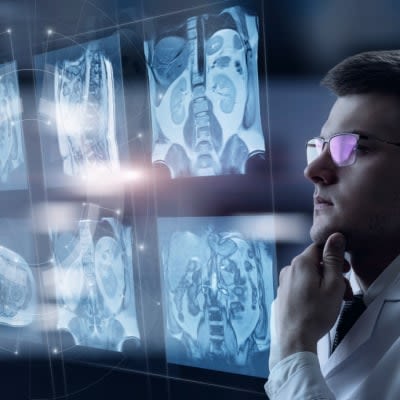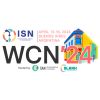Magnetic resonance (MR) imaging is a useful imaging tool with superior soft tissue contrast for diagnostic evaluation and no radiation hazard. However, unexpected biological effects can occur within stronger magnetic fields used in newer MR systems, according to a review published in European Journal of Radiology.
See Also: A Safer Way to Image Molecules in the Brain
In recent years, MR systems have advanced with static magnetic fields, faster and stronger gradient magnetic fields and more powerful radiofrequency transmission coils. The rapid evolution of MR technology has given rise to new MR-related circumstances and unexpected dangerous conditions. The paper says it is necessary to update our knowledge about MR safety in order to prevent MR-related accidents.
The static field strength used clinically is between 0.2 and 3.0 T, although the magnetic strength for research can reach 17.5 T. As noted in the review, the use of a 7 T system for clinical applications beyond 3 T systems has increased gradually. The U.S. Food and Drug Administration (FDA) considers a magnetic field safe up to 8 T for adults, children, and infants aged more than one month, and 4 T is considered safe for neonates.
"There is no measured effect on the human body in a lower magnetic field, but unexpected biological effects can occur within stronger magnetic fields. Any significant biological effects tend to occur above 4 T. The velocity of capillary red blood cells can decrease under static magnetic fields, as shown in an animal study. Systolic blood pressure was reported to increase an average 3.6 mmHg at 8 T," say review authors Soo Jung Kim and Kyung Ah Kim, both from the Department of Radiology, St. Vincent’s Hospital, College of Medicine, The Catholic University of Korea in Seoul.
The number of MR-related adverse events has increased steadily since its introduction to clinical use, probably due to the increase in the number of MR examinations and stronger electromagnetic fields, the authors note. Patients within a magnetic field can undergo acute transient symptoms including vertigo, nausea, and a metallic taste. Patients can experience a greater severity of these symptoms in an ultra-high magnetic field MR (7 T or above).
There are other various MR-related adverse events cited in the paper; the more common ones include:
Translational force and torque affecting devices or implants – Metallic objects under static or changing magnetic fields undergo a translational force and torque to align with the magnetic field. The translational and rotational forces on an implanted metallic object can cause the object be dislodged and tear adjacent tissue. Implantable medical devices such as stents, clips, prostheses, and cardiac pacemakers can be affected by these forces.
Burns – Burns are the most common MR-related adverse events. Most are second degree burns. A local radiofrequency (RF) power deposit, leading to tissue heating, is quantified as the Specific Absorption Rate (SAR) in W/Kg. The SAR is an important issue associated with burns. If the SAR is increased, the possibility of thermal injury increases. The RF energy must be adjusted to avoid a core temperature rise in excess of 1°C and localised heat greater than 38°C in the head, 39°C in the trunk, and 40°C in the extremities. Thermal injuries during MR imaging have been reported and linked to monitoring systems including sensors, cables, or other foreign objects applied to the patient.
Cognitive function and nerve and muscle stimulation – Exposure to clinical MR usually does not affect cognitive function. Simultaneous exposure to a static and low frequency movement-induced time-varying magnetic field from a 7 T MR scanner can affect neurocognitive performance resulting in reduced verbal memory and visual acuity. During MR examination, rapidly switching gradient magnetic fields may stimulate nerves or muscles by inducing an electrical field. Patients may perceive mild peripheral nerve stimulation as a tingling or tapping sensation to severe pain.
The authors also note that there are no known cumulative harmful effects of magnetic field exposure. For occupational issues, healthcare workers (e.g., technicians, radiologist, anaesthetists, and anaesthesiologists) can be exposed to an electromagnetic field repeatedly while entering into the magnet room to position or care for a patient, and they stay near the MR scanner during image acquisition. The limits for occupational exposure are different, according to the guidelines of each nation and institution.
For the safety of MR personnel and patients, the American College of Radiology (ACR) recommends a four-zone model for the MR environment. The zonal restriction discriminates accessibility according to zone classification and limits easy access to potentially dangerous sites – zone III (where the MR imaging control room is located) and zone IV (the MR imaging unit magnet room). Zone I is freely accessible to the general public, while zone II is the site to greet patients, obtain patient histories, and screen patients for MR-related safety issues.
Patient medical histories should be carefully taken using updated safety screening forms and an MR hazard checklist containing information about implanted devices, ferromagnetic materials within the body, and experience with metal injury, etc.
Source: European Journal of Radiology
Image Credit: Wikimedia Commons
References:
Kim, Soo Jung. Kim, Ah Kyung. (2017) Safety issues and updates under MR environments. European Journal of Radiology. DOI: http://dx.doi.org/10.1016/j.ejrad.2017.01.010
Latest Articles
MRI, Magnetic Resonance Imaging, MRI hazard
Magnetic resonance (MR) imaging is a useful imaging tool with superior soft tissue contrast for diagnostic evaluation and no radiation hazard. However, unexpected biological effects can occur within stronger magnetic fields used in newer MR systems, accor



























